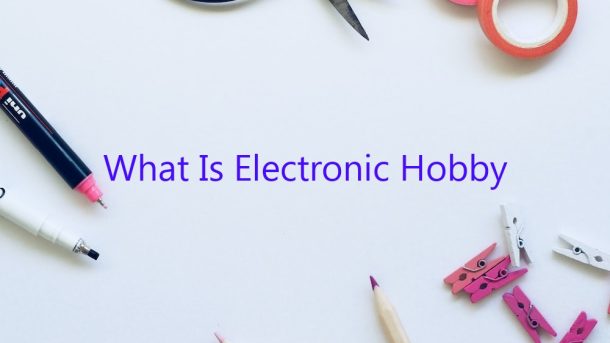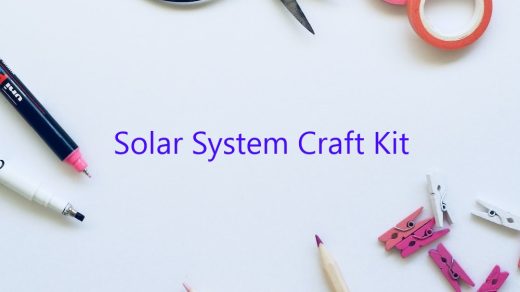What is electronic hobby?
An electronic hobby is a pastime or activity involving the use of electronic components to create or repair electronic devices and circuits. People who engage in electronic hobbies are commonly referred to as “electronics hobbyists.”
The hobby encompasses a wide range of activities, including building electronic circuits, creating custom computers, repairing radios and televisions, and fabricating electronic devices from scratch. Many electronics hobbyists also enjoy experimenting with new technologies, such as 3D printing and Arduino.
Why do people engage in electronic hobbies?
There are many reasons why people might become interested in electronic hobbies. Some people enjoy the challenge of building or repairing complex electronic devices. Others appreciate the satisfaction of being able to create something from scratch, or the sense of accomplishment that comes from repairing a broken device. Some people simply enjoy tinkering with gadgets and technology, and find electronic hobbies to be a fun way to spend their free time.
What are the benefits of electronic hobbies?
There are many benefits to engaging in electronic hobbies. Firstly, it can be a very rewarding experience to create or repair something that is broken. Secondly, electronic hobbies can be a great way to learn about new technologies and how they work. Thirdly, they can help you to develop problem-solving skills and a deeper understanding of electronics. Finally, they can be a fun way to spend your free time.
Contents
How do I get an electronic hobby?
There is no one-size-fits-all answer to this question, as the best way to get into electronic hobbies will vary depending on your interests and skills. However, here are a few tips to help you get started.
If you’re interested in learning more about electronics, one easy way to get started is by reading online tutorials. There are many websites and online forums devoted to electronics hobbyists, and they are a great source of information. You can also watch online video tutorials, which can be a great way to learn new skills quickly.
Another option is to join an online community of electronic hobbyists. This can be a great way to get advice and feedback from other enthusiasts, as well as to find new project ideas. There are many online forums and websites devoted to electronic hobbies, so there’s sure to be one that’s right for you.
Finally, if you’re looking for a more hands-on approach, you may want to consider taking a class or workshop. There are many electronics classes and workshops available, both online and in person. This can be a great way to learn from experts, and to get started on your own projects.
Can you learn electronics as a hobby?
Many people ask if it is possible to learn electronics as a hobby. The answer to this question is yes, you can learn electronics as a hobby. However, it is important to note that it is not a quick or easy process. If you are willing to put in the time and effort, though, you can learn a great deal about electronics and how they work.
One of the best ways to learn about electronics is to start by reading about them. There are a number of books on the subject, and you can also find plenty of information online. Once you have a basic understanding of the concepts, you can start working on some simple projects.
One of the best things about learning electronics as a hobby is that you can start with very simple projects. You don’t need a lot of equipment or knowledge to get started, and you can work your way up to more complex projects as you learn more.
If you are interested in learning about electronics, be prepared to spend some time learning about the subject. It is not a quick or easy process, but it is definitely worth it in the end. With a little effort, you can learn a great deal about electronics and how they work.
Is Arduino a good hobby?
Arduino is a single-board microcontroller designed for hobbyists, artists, and professionals. It has gained immense popularity in recent years due to its flexibility and ease of use.
Whether Arduino is a good hobby for you depends on your needs and interests. Arduino is a great platform for learning about electronics and programming, and it can be used for a wide variety of projects. However, it can be a bit challenging to get started, so you need to be willing to learn and experiment.
If you’re interested in learning about electronics and programming, Arduino is a great option. It’s a platform that is both versatile and easy to use, and you can create a wide variety of projects with it. However, it can be a bit challenging to get started, so you need to be willing to learn and experiment.
What are the basics of electronics?
In very simple terms, electronics is the study of how to control electric currents. It covers everything from designing and building circuits to understanding how current flows through different materials.
One of the most important things to understand about electronics is that it relies on a set of fundamental principles that never change. These principles are what allow us to create circuits that can do everything from turning on a light bulb to sending a text message.
One of the most basic principles of electronics is that electric current always flows from a higher voltage to a lower voltage. This is why a battery is able to power a device like a flashlight. The battery has a higher voltage than the flashlight, and so the current flows from the battery to the flashlight.
Another basic principle of electronics is that electric current can be controlled by using switches. A switch is a device that can be turned on or off, and this control is what allows us to create all sorts of different circuits.
One of the most important things to understand about electronics is that it relies on a set of fundamental principles that never change.
One of the most basic principles of electronics is that electric current always flows from a higher voltage to a lower voltage.
Another basic principle of electronics is that electric current can be controlled by using switches.
How do electronics work?
How do electronics work?
Electronics are all around us, from the simple light switch to the most advanced computer. But what are they, and how do they work?
An electronic device is made up of electronic components, which are tiny pieces of metal, plastic, or glass that are connected to each other to form circuits. When electricity flows through these circuits, it can control things like lights, motors, or speakers.
Most electronic devices use a type of electricity called alternating current, or AC. AC is a type of electricity that switches back and forth between two different voltages, or levels of electricity. This switching back and forth happens very quickly, so it gives off a pulsing, or alternating, signal.
Electronic devices use this pulsing signal to do things like switch on and off, or to control the speed of motors. They do this by turning the pulsing signal into a type of electricity that the device can use. This type of electricity is called direct current, or DC.
To turn the AC signal into a DC signal, electronic devices use something called a transformer. A transformer is a piece of metal that has two coils of wire wrapped around it. When the AC signal flows through the first coil of wire, it creates a magnetic field. This magnetic field then passes through the second coil of wire, and it creates a DC signal.
Electronic devices can also use a type of electricity called digital. Digital signals are made up of tiny pieces of information that are either on or off. These signals are used to control things like the pixels on a screen or the switches on a circuit board.
Most electronic devices use a type of plastic called a printed circuit board, or PCB, to hold all of their electronic components. A PCB is a piece of plastic that has a bunch of tiny holes in it. These holes are called vias, and they are used to connect the different electronic components together.
PCBs are usually covered in a thin layer of metal, which is used to hold the electronic components in place. This metal is also used to create the circuits that control the electronic device.
There are a few different ways to create these circuits. One way is to use something called a resistor. Resistors are tiny pieces of metal that are used to control the flow of electricity. They do this by creating a resistance, which is a measure of how difficult it is for electricity to flow through them.
Another way to create circuits is to use something called a capacitor. Capacitors are tiny pieces of metal that are used to store electricity. They do this by creating a capacitor, which is a measure of how much electricity they can store.
Electronic devices can also use a type of plastic called a chip. Chips are tiny pieces of plastic that have a bunch of tiny circuits on them. These circuits are used to control the electronic device.
Chips are usually covered in a thin layer of metal, which is used to hold the chips in place. This metal is also used to create the circuits that control the electronic device.
There are a few different ways to create these circuits. One way is to use something called a resistor. Resistors are tiny pieces of metal that are used to control the flow of electricity. They do this by creating a resistance, which is a measure of how difficult it is for electricity to flow through them.
Another way to create circuits is to use something called a capacitor. Capacitors are tiny pieces of metal that are used to store electricity. They do this by creating a capacitor, which is a measure of how much electricity they can store.
Elect
What electronics should I learn first?
There are a plethora of electronics to choose from when you are starting out. So, what should you learn first?
One option is to begin with the basics and work your way up. This can be a great way to gain a strong foundation in electronics. You can start by learning about basic components, such as resistors, capacitors, and inductors. Next, you can learn about basic circuits, such as series and parallel circuits. Once you have a good understanding of these concepts, you can move on to more complex ones, such as transistors and integrated circuits.
Another option is to focus on a specific area of electronics. For example, you could focus on learning about microcontrollers, which are used in a variety of applications, from robotics to home automation. Or, you could focus on learning about digital electronics, which are used in devices such as computers and smartphones.
No matter which route you choose, it is important to stay motivated and continue learning. The field of electronics is constantly changing, so it is important to keep up with the latest trends and technologies.
Is it hard to learn Arduino?
Arduino is a microcontroller board that can be used to control a wide variety of devices, from simple lights and motors to more complex devices like robots and 3D printers. Arduino can be used to control devices by sending it code, which can be written in a number of different programming languages.
While Arduino can be used to control a wide variety of devices, it can be a little difficult to learn how to use. The Arduino software is not the most user-friendly, and the board itself can be a little difficult to work with. However, with a little time and patience, Arduino can be a powerful and versatile tool.




